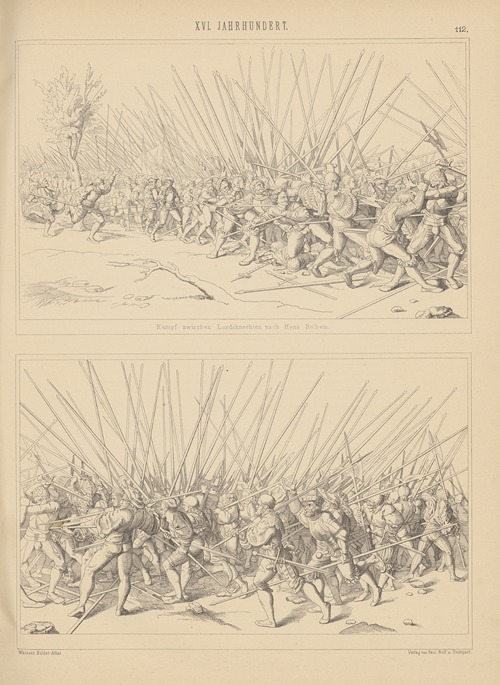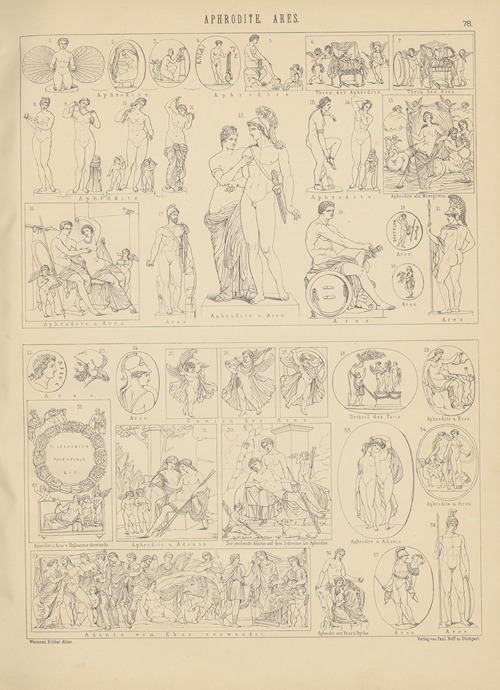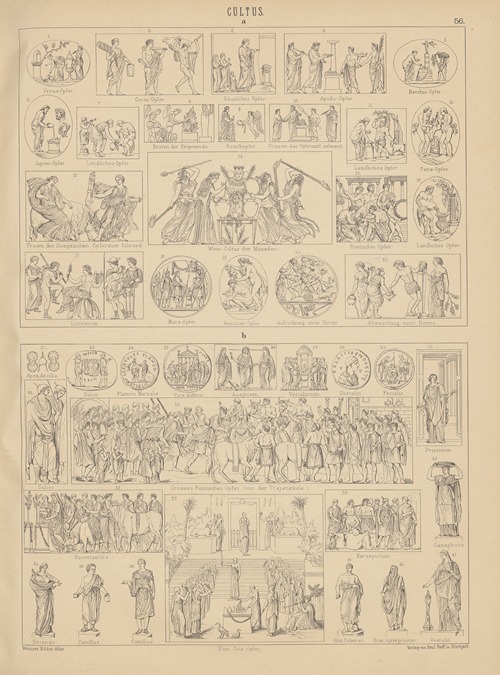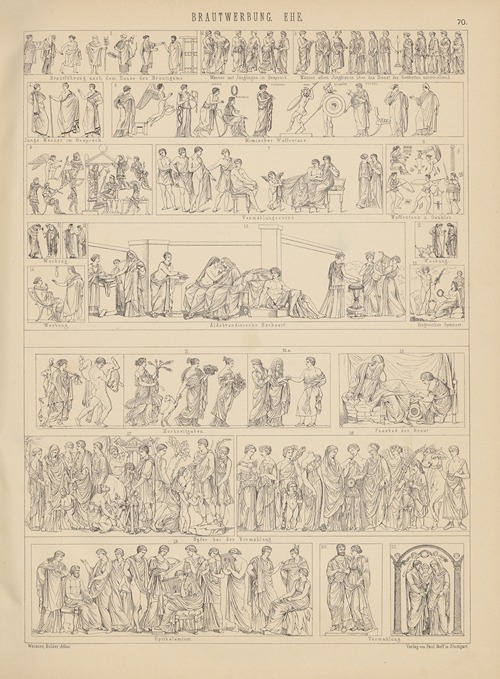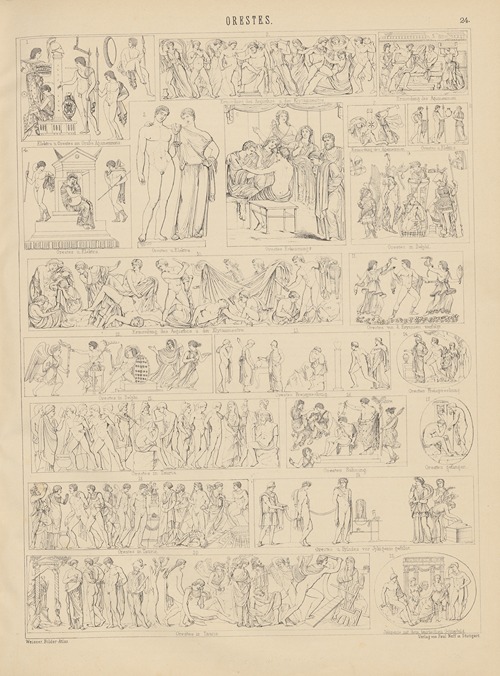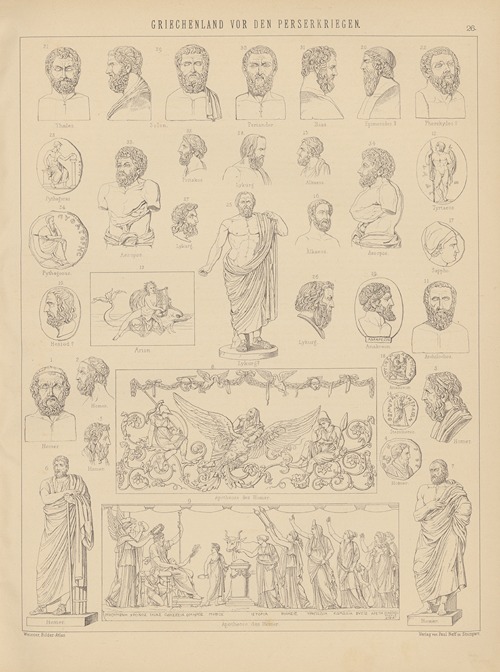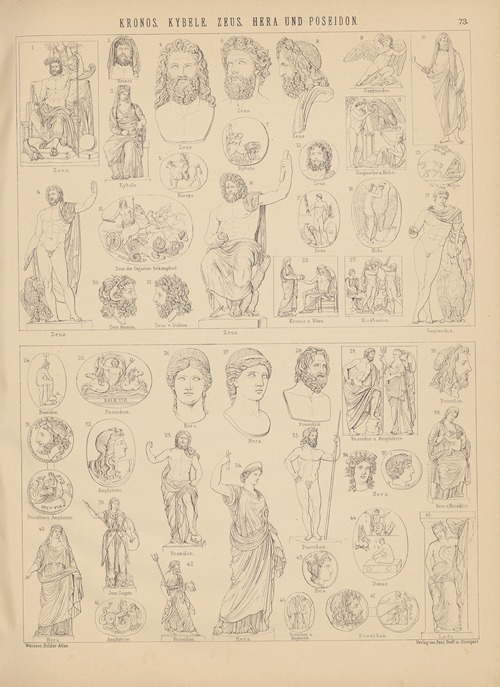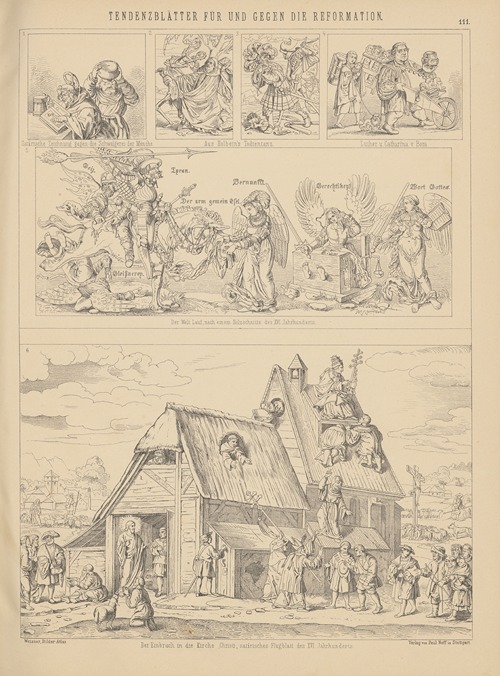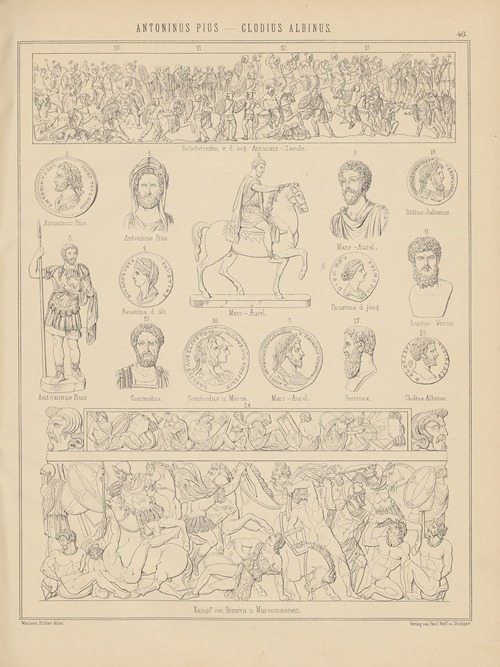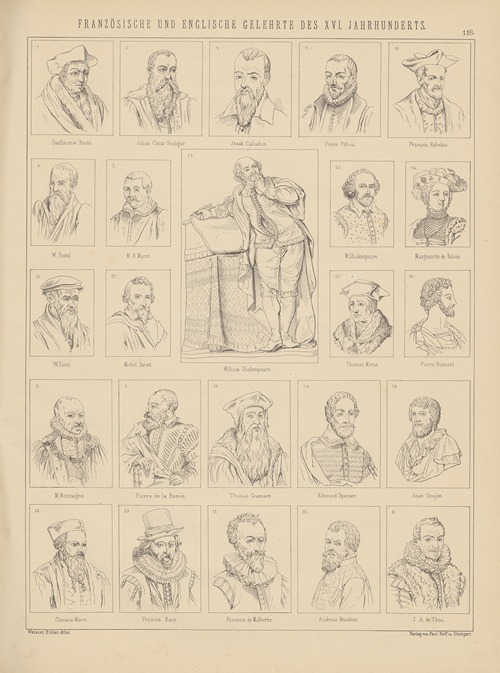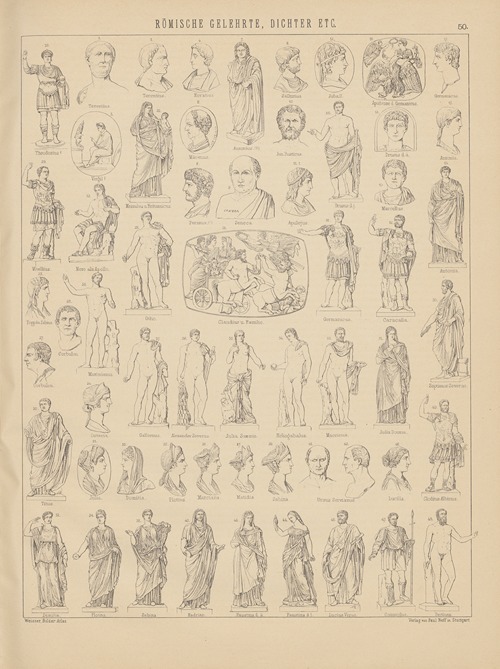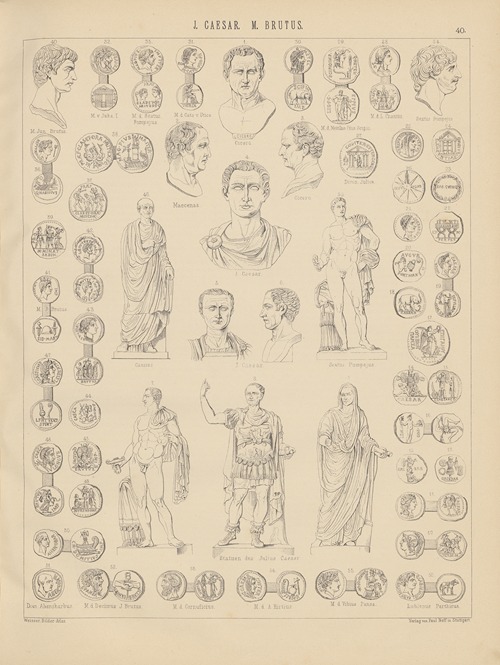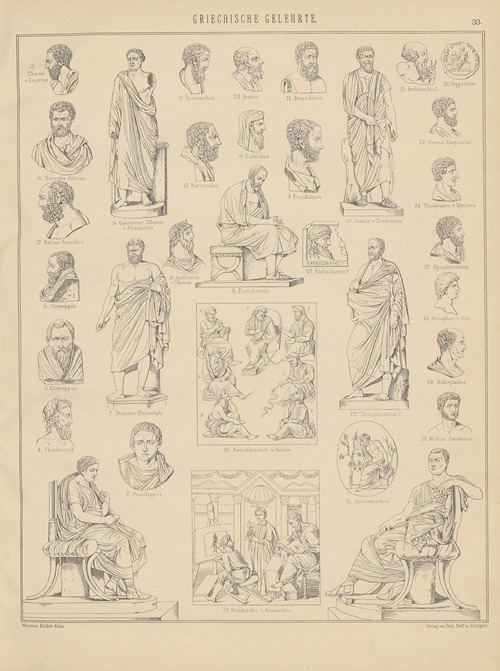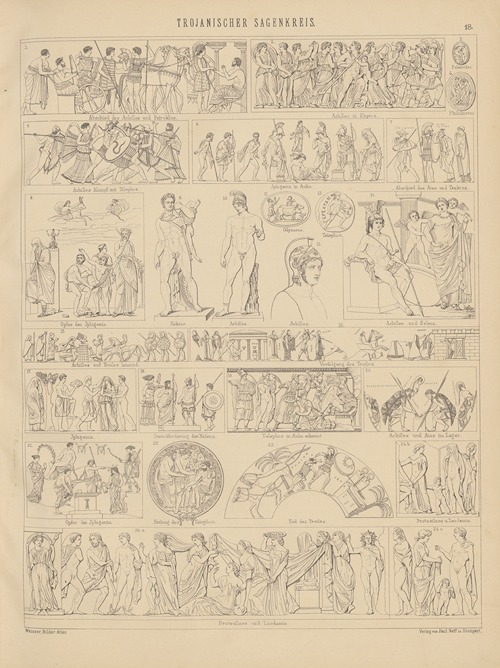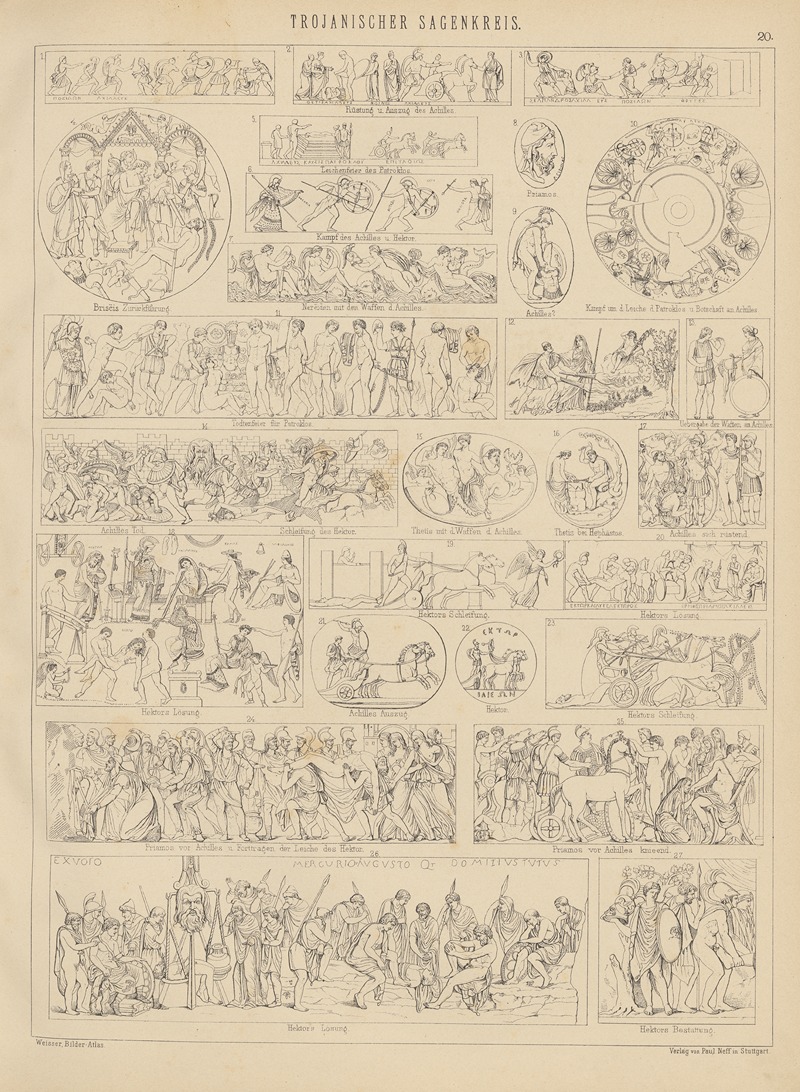
Karl Ludwig Weisser was a German lithographer and art scholar.
Karl Ludwig Weisser (also Weißer) was born in Unterjettingen as the son of a pastor. When he lost his father in 1828, he was taken in by his maternal uncle, Pastor Karl Christian Gratianus in Sondelfingen near Reutlingen. Here, as later again with his mother, he discovered his interest in art. Lacking the financial means to pursue a career as an artist, he began an apprenticeship with the lithographer Gottfried Küstner in Stuttgart in 1837. He was allowed to study figure and ornamental drawing at the trade and art school, as well as drawing from antique and living models.
Due to short-sightedness, he gave up his childhood dream of becoming a painter. He immersed himself in the works of art writers Johann Joachim Winckelmann, Johann Heinrich Meyer, and Karl Schnaase. His studies in art philosophy led him to Immanuel Kant and Georg Hegel. After a two-year apprenticeship, he was able to make a living from lithography and as an illustrator for the publishers Franckh, Becher, and Krabbe in Stuttgart. With the exception of one picture from 1842, he did not sign his works.
In 1848, he joined the democratic party in Württemberg, whose leaders included his brother, the writer Adolf Weisser (1815–1863), then editor of Der Beobachter – a popular newspaper for Württemberg – and his poet friends Hermann Kurz and Ludwig Pfau. When Pfau was forced to flee, Weisser took over the editorship of the political satire magazine Eulenspiegel for a year in the summer of 1849. As editor-in-chief, he was sentenced to eight months in prison in the spring of 1850 for lèse-majesté due to the publication of a satirical image that he did not create. In 1851, he married Karoline Pfeiffer from Stuttgart. One of his daughters was the painter Emilie Weisser, born in 1854.
In 1858, Wilhelm I of Württemberg opened the Inspectorate of the Royal Copperplate Collection. After Weisser was rehabilitated by the king, he took over its management, recatalogued the collection with his wife, and expanded it with his expertise. From 1862 to 1866 (from 1863 as a professor), he was appointed lecturer in art history at the Stuttgart Art School. From 1866, he taught costume design with excursions into art history. He recorded his vast knowledge in Die Kunst für alle (Art for All), a collection of the finest engravings, etchings, and woodcuts from the 15th to 17th centuries, with a special focus on art and cultural history, in photographic prints by M. Rommel.
He died of pleurisy in Stuttgart on February 26, 1879.
